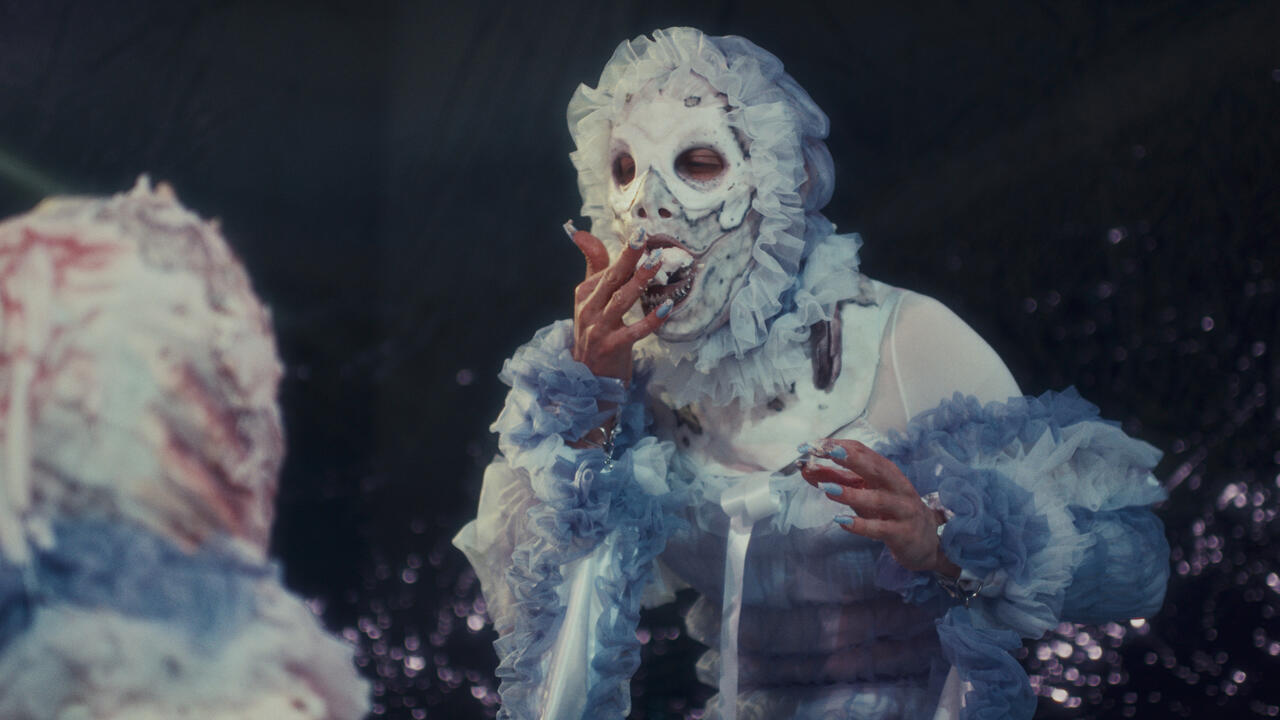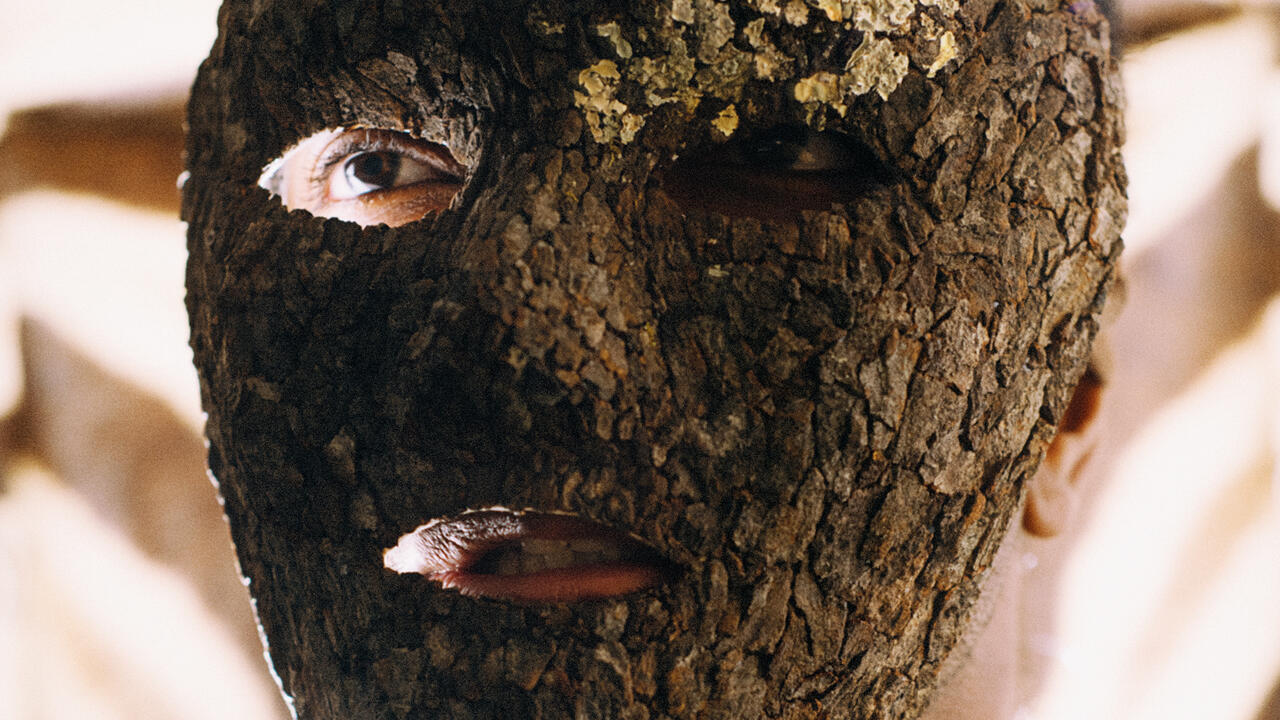Phantasmagoria
Presentation House Gallery, Vancouver, Canada
Presentation House Gallery, Vancouver, Canada

Not too long ago, I was caught unawares by the particularly sexy flyer for ‘Phantasmagoria’, which had been tacked to a friend’s studio wall. Its matte surface had been embossed with a slender font that was in turn filled with an ultra-hip chromatic gradient. Thus followed a premonition of the show to come: one that would trade on the kind of sensory pleasure that operates in and around the gap between psychedelic sensuality, and a safely commodified Instagram version of the same.
A press release announced that a critical reflection on photography, via an ‘array of techniques’, was the exhibition’s priority, positioning the concept of phantasmagoria as a historical way-point for that concern. That term refers to both the 19th-century projection apparatus that allowed for the transmogrification of projected images, and Walter Benjamin’s invocation of its effect in his description of ‘the impact of mass culture and technological innovations on modern life’.
This was all interesting stuff, but what really got my spine tingling was a quotation from Joan Didion, describing the way in which we constantly observe and select from a variety of options, in order to ‘freeze the shifting phantasmagoria which is our actual experience’. The techniques used by the 15 artists in this show (all Canadian and most from Vancouver) included light prints on paper, a conceptual jest by way of totally exposed photo-sensitive paper, manipulations of analogue exposure techniques, collages, inkjet prints on linen, dreamy trompe l’oeils, snapshots, images from Google Street View, sculpture, video and slide projections, photographs of ‘learning shapes’ for children, assemblages and web-based archive works.
With this kind of variety, ‘Phantasmagoria’ appeared as a costume party whose guests dressed alternately in seamless concordance with the theme, and playful deviations from it. At the exhibition’s sweaty opening, Andrew Dadson’s Black Light (2012) played the brooding wallflower. This work comprised some 144 fluorescent tubes, slathered in black paint and mounted to the wall so as to approximate the dimensions of a small billboard (or, in a Vancouver-centric interpretation, a Jeff Wall light-box). Specks of light showed through the paint, causing the work to flicker between a clever mimicry of the night sky, a humming Frankenstein-like work of high Modernist tropes.
While Presentation House is dedicated to photography, many works (like Dadson’s) strained the term. This isn’t a new conceit, but the show’s disruption of semantic distinctions seemed relevant for other, more immediate, reasons. The imaginative, slightly mischievous spirit rhymed nicely with the whimsy accompanying many of the artists’ crafty manipulations of image-making technologies. These kinds of games might have seemed frivolous if it weren’t for the presence of less obviously provocative works.
Take, for instance, Jessica Eaton’s three, intensely colourful, geometric abstract c-prints (from 2010 and 2011) from a series called ‘Cubes for Albers and LeWitt’. These works were made by photographing and re-photographing cubes and colour transparencies. Viewers didn’t stand a chance at figuring that out without further research, however, so the works remained mysterious sounding boards for the show’s 19th-century references.
Dan Siney made inventive, un-provocative use of photography with his diminutive snapshot, Cow Boy (2012). Showing a silver Audi, the work’s seeming offhandedness contained deceptively complex compositional elements. The reflection of trees in the car’s windshield, for example, had a reciprocal echo with the branches behind the automobile.
Close by was a cluster of seven digitally reproduced collages by Elizabeth Zvonar (all 2012), featuring undulating polka-dot alien silhouettes, ambiguously tribal phallic idols, and a patterned, primitivist hand offering an open-palmed greeting. In contrast to Siney’s everyday spatio-visual psychedelia, these images opened imaginative portals into a world that looked like a vibrant extra-terrestrial terrarium.
With two online works by Kevin Schmidt and Jay Bundy Johnson, entitled The End of the World and Free (both 2012), I appreciated the attempt to breach the traditional exhibition format, but found it difficult to become engaged after having been offered so much immanent experience. Some works stretched the exhibition’s theme too far. Johnson’s deadpan online database of images pulled from Craigslist, for example, spoke more to the digital image’s role in economic exchanges.
Similarly, Christopher Brayshaw’s War Game Tree (2012), a photograph of the same site where Wall took his famous work War Game (2007), was intriguing for the research and the mildly pathological gesture of mimicry underpinning it, but didn’t jive with the show’s magic-lantern flavour.
Given that one of the most exciting qualities of this exhibition was its focus on Canadian artists who seemed unconcerned with the hyper-referential ethos of photo-conceptualism, I couldn’t sympathize with the impulse to pull Wall, the arch-grandmaster of that tradition, back into the fold. Otherwise, ‘Phantasmagoria’ tapped into a mainline of prescient and lively artistic activity with surprising directness. At its best, it projected the unpretentious criticality of a network of attic-bound inventors taking apart and re-structuring technology, for no other reason than to see what else it can do.
























